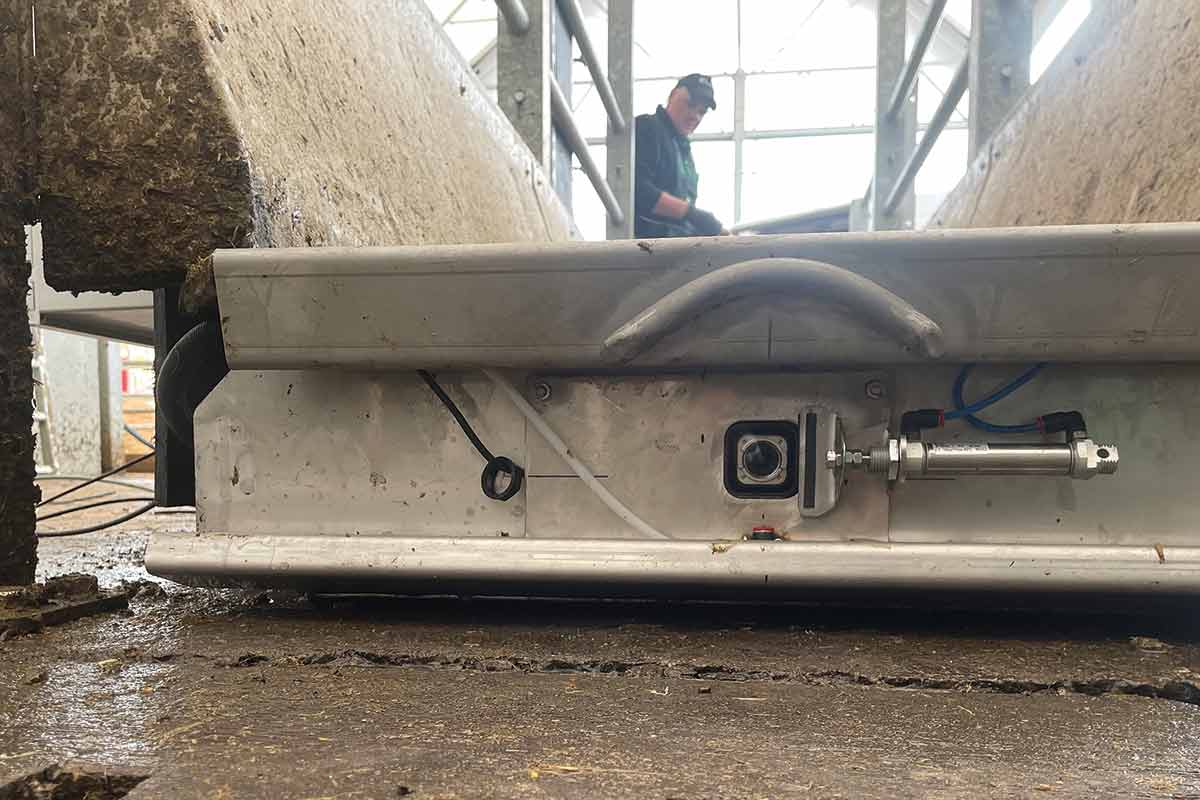It is estimated that about 30% of the UK’s total dairy herd suffers from lameness, with digital dermatitis one of the biggest contributing factors.
Anthony Marsh, founder and director of Hoofcount, explains that more than 90% of UK herds are likely to have cases of the infection, costing in excess of £300 per incident.
The company started developing automatic footbaths in 2012, aiming to improve herd health. Two years ago, it was granted £250,000 in funding from UK Research and Innovation to develop the Pedivue system.
Working with the UK Agri-Tech Centre at the South West Dairy Development Centre in collaboration with farmers, and the Centre for Machine Vision at the University of the West of England Bristol, the company has combined a camera system with artificial intelligence (AI) to aid with the early detection of lesions.
“The actual hardware is simple and can be retrofitted to any of our Hoofcount footbaths,” Anthony says.
“A high-speed camera is mounted at the end of the footbath, with a light to improve the image quality. As the cow steps over the edge, a hundred images per second are collected of the hooves and are filtered through an algorithm to recognise lesions at the M2 active stage or the M4 chronic stage.”

Farmers will then receive a notification on the Pedivue dashboard, available on desktops and smart devices, within two to three days.
The notification will include each cow’s identification number, an image of any lesions, highlighted with a box to make it clear to the user.
The dashboard also includes a breakdown of new and ongoing infections as a percentage of the overall herd and treatment and retreatment lists.
There will also be a follow-up email sent a week after discovery to remind farmers to retreat affected animals.
According to Anthony, this should reduce the time taken to recognise and treat digital dermatitis by more than three weeks. As cattle will pass through the footbath after milking at least once, if not twice, a day, there are multiple opportunities to capture evidence of lesions before the infection affects the overall health of the cow.
Multiple savings
Nick Bell, director of Herd Health Consultancy, says the system will not only improve the health of dairy herds, but could reduce the time and costs associated with checking hoof health.
“We know digital dermatitis can have a major effect on milk yields and even though it is easily treated with a basic disinfectant, it continues to be prevalent on UK farms.
It’s particularly concerning when you consider that formalin is now classified as a probable carcinogenic, meaning it could be at risk of withdrawal.”
He says checking for the infection used to be a two-man job, involving manually cleaning and examining each hoof. This might only have been done when the animal was already showing signs, which gave the infection time to spread. Additionally, lesions can be easy to miss, especially in the early stages.
The Pedivue system reportedly had an accuracy of over 80% in detecting active lesions, as well as 90% accuracy on hoof identification, on the four test farms – the data from which was used to continually train the AI.
This means treatment can be targeted to individual animals, instead of the ‘blitz’ method widely used until now.
Subscription plans
A limited rollout of the Pedivue system is planned in the coming months, retrofitting the camera to 20 Hoofcount footbaths. This small-scale launch will help the company to further develop the algorithm ahead of a full rollout.
It will be offered on a monthly subscription basis, with Hoofcount charging £1 a cow, as well as the upfront cost of the camera.
Within this, the company says it will include quarterly mobility score examinations. These will be done by a specialised team in the short term, but the company hopes to integrate mobility score testing, as well as other hoof-related diagnoses into the system.
“We want to bring instances of digital dermatitis down to single figures,” says Anthony. “An unhealthy cow is bad for the farm, it’s bad for milk yields and profitability, and it’s bad for the cow.”


